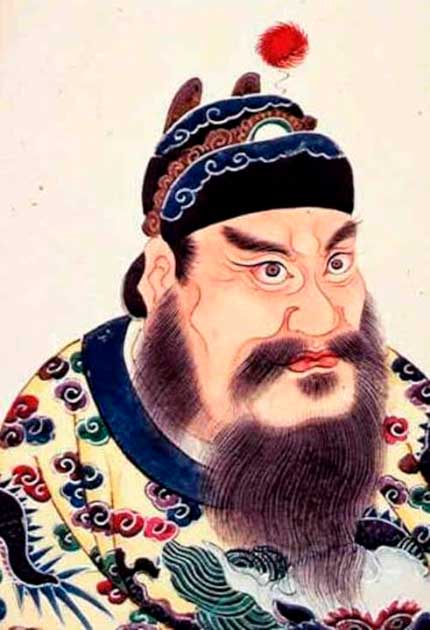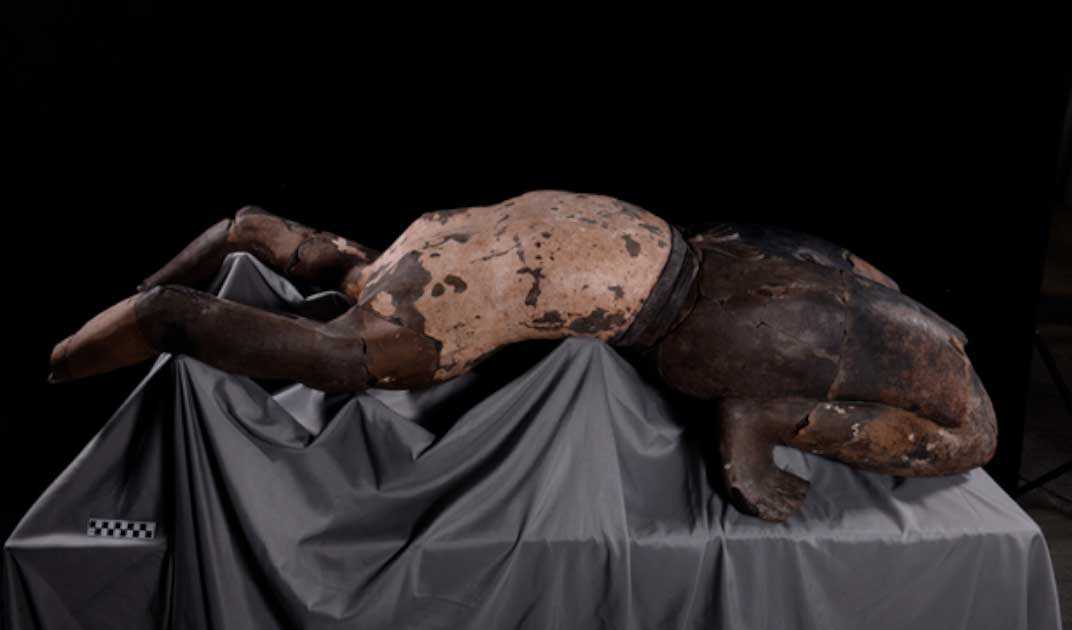One In 8,000! This Unique Terracotta Figure Is Unlike All The Rest
Let’s begin this story with an exercise. If you are not driving, lie down on your back. Bend your knees and place your feet on the ground about your hips-width distance apart. Now, place your right ankle above your left knee on the thigh. You are now in the “supine” position of the terracotta figure discovered in Emperor Qin Shi Huang's tomb in China, dubbed the “supine figure.”

The terracotta figure is a unique artifact, providing clues into the lifestyle of Emperor Qui Shi Huang. (China News / Xinhua)
Acrobatic Terracotta Figure Amongst an Army of Terracotta Warriors
China celebrated its Cultural and Natural Heritage Day on June 11, 2022, an event which has been taking place since 2006. It was on this public holiday that Emperor Qinshihuang's Mausoleum Site Museum in Xi'an, within northwest China's Shaanxi province, unveiled the rare terracotta figure. Designed to look after the Mausoleum of Emperor Qin Shi Huang, this is the largest museum in China and it contains the richest collection of artifacts including the Terracotta Warriors and Horses of Qin Shi Huang.
- The Ruthless Chinese Emperor Qin Shi Huang: How He Unified and Tyrannized His Subjects
- The Secret Tomb of the First Chinese Emperor Remains an Unopened Treasure
On March 29, 1974, archaeologists in China discovered the first warriors of the now famous terracotta army of more than 8,000 life-size clay soldiers guarding the burial site of China's first emperor, Qin Shi Huang of the Qin Dynasty (221 to 207 BC), who formally unified China for the first time. Every single one of the terracotta warriors is either sitting or standing, and this is why the “lying” figure is such an oddity.

The acrobatic terracotta figure was discovered at the mausoleum complex of Emperor Qin Shi Huang, famous for its 8,000-strong terracotta army. (lapas77 / Adobe Stock)
The Lush Lifestyle of China’s First Big Boss
A report on China.org explained that archaeologists discovered the lying figure buried in what is known as the “Acrobats Figures Pit” or “Baixiyong Pit.” This excavation site is situated at the southeast area in the Qin Shi Huang Mausoleum and covers around 700 square meters (835 square yards).
In 1999, eleven painted acrobatic figures and a bronze tripod were discovered in Pit K9901. According to Travel China Guide, these so-called “acrobatics figures” offer an insight into the art and the entertainment culture in the Qin Dynasty royal court.
The term “Acrobats Figures Pit” is actually the translated name for “Baixiyong Pit,” since the word “acrobatics” in Chinese is Baixi. This term encompasses not only what we regard today as acrobatics, but also pole climbing, wrestling, dance, song, sword crafts and tripod lifting. However, according to the museum, the supine figure is “different from terracotta soldiers and civil officials in other burial pits” because it is lying down.

A portrait of Qin Shi Huang, the first emperor of the Qin Dynasty, from an 18th-century album of Chinese emperor's portraits. (Public domain)
Hunting for Clues in the Lacquer
Measuring 154 centimeters (60.63 in) in length and weighing in at 101 kilograms (222.66 lbs), the so-called “supine figure” has fingerprints on its belly. These marks were left by the ancient artisans who created the terracotta figures.
Besides these ghost prints, archaeologists have identified lacquer stains on the arms of the terracotta figure. Together, these offer scientists further insights into the lost methods and processes of the ancient craftspeople who served the first emperor.
The museum concluded that the acrobatic figures recovered from Pit 9901 probably depict “real acrobats who performed in the imperial palace.” More recently, discoveries at this site have included several terracotta strongmen, 15 musicians and 13 bronze water birds. An article from Liverpool Museums explained that there was also a pit full “of stone armor and several pits full of horse skeletons.”

The terracotta figure, pictured here from above, represents an acrobat, created to provide entertainment in the afterlife for Emperor Qin Shi Huang. (China News / Xinhua)
Terracotta Figure Provides Entertainment in the Afterlife
Emperor Qin Shi Huang was buried with everything he needed for the afterlife. Most famously, a terracotta army complete with hundreds of carefully positioned archers and crossbowmen with life-size clay horses. However, the afterlife was not all about battling demons. The emperor also needed entertainment in the hereafter; hence the acrobats.
This all comes together when we take into consideration the ideas of Taoism, Buddhism and traditional Chinese folk religion. Where in Christianity there is a purgatory, in ancient Chinese spiritual systems there was diyu. Typically depicted as a multileveled subterranean maze with endless chambers, into which souls are taken after death to atone for the sins they committed while alive, this is where spirits are prepared for reincarnation.
- Terracotta Army Weapons Were Genuine, Military Grade and State of the Art
- Technology Reveals Chinese Terracotta Warriors Were Likely Replicas of Real Soldiers
The trouble was, time in diyu passed like time did in the Celtic Fairy Land of the Shide, wherein seven days could take 700 years to pass. Furthermore, the emperor knew he had a fair old list of sins to work out on the other side, so he prepared for a long stretch down under. While his terracotta soldiers resisted the onslaught of demons, Emperor Qin Shi Huang was prepared to enjoy his downtime with a personal side show of musicians, strongmen and of course, acrobats.
Top image: The terracotta figure represents an acrobat, created to provide entertainment in the afterlife for Emperor Qin Shi Huang. Source: Xinhua
By Ashley Cowie



















